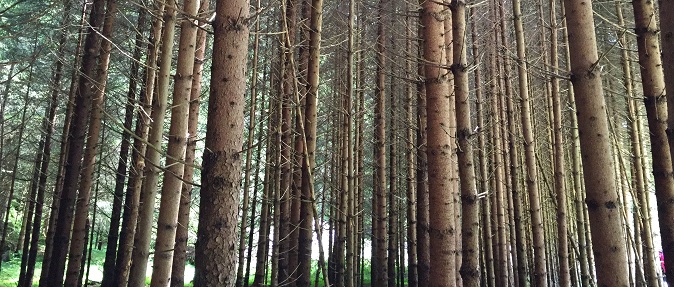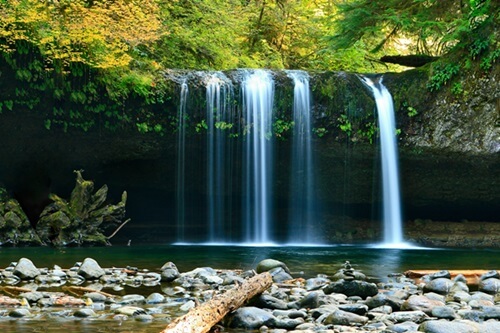
TERRAZZO SUSTAINABILITY
- Among original recycled products
- Sustainability – life of facility finish
- Low maintenance costs
- VOC free ! CA free prop 65 Compliant
- Won’t harbor dirt/bacteria
- Local Sourcing available
- HPD’s & EPD’s available
- Among original recycled products
GOING GREEN WITH TERRAZZO
Nothing beats terrazzo in the realm of “green” flooring. The first terrazzo-like floors created nearly 9,000 years ago in the middle east still exist today, and ancient terrazzo floors still stand in many buildings throughout Europe.

Terrazzo-like floors created thousands of years ago still exist many of them with a compressive strength of nearly 500 pounds per square inch.
Cementitious terrazzo floors still stand in many ancient structures throughout Venice, including at least one installed as early as 1309.
There is no clearer confirmation of terrazzo’s superior sustainability than to examine the Renaissance-era floors created in the 14th century. Utilizing pre-consumer waste chips from marble slab processing operations, these floors were one of the world’s first recycled products.
- Ancient terrazzo is remarkably similar to modern cementitious terrazzo, almost to the point of indistinguishability
- These surfaces are still serviceable and aesthetically pleasing even after hundreds of years
- Modern technology and the advent of polymers has led to epoxy terrazzo flooring systems which are even more sustainable and durable than cement terrazzo floors
- Modern technology and the advent of polymers has led to epoxy terrazzo flooring systems which are even more sustainable and durable than cement terrazzo floors
- With epoxy terrazzo we now have the option to incorporate post-consumer and pre-consumer recycled content (such as glass) to create truly timeless terrazzo flooring
- Terrazzo is a non-porous system with no grout joints
- Terrazzo does not support microbial growth
- Terrazzo does not allow the accumulation of water — it absorbs water at a rate 1/10th that of cementitious terrazzo, resulting in greatly increased stain resistance
- The lack of water absorption and porosity results in a surface requiring only minimal cleaning processes
- Terrazzo does not require the use of harsh cleaning chemicals
- Unlike materials like carpeting, tile or wood, terrazzo is monolithic and does not contain grout joints, and therefore has no need for energy-intensive vacuuming, grout cleaning or steam cleaning
- Terrazzo’s advantages in sanitation result in an overall improvement of the indoor air quality of buildings such as hospitals and schools, and anywhere else indoor air quality is a factor.
Master Terrazzo’s Morricite system meets the most stringent environmental standards, including the State of California’s Special Environmental Requirements Section 01350 Standard Emissions testing for indoor air quality.
GREEN TERRAZZO ENVIRONMENTAL IMPACT
Adapted from the NTMA flyer The Environmental Impact of the Use of Cement & Epoxy Terrazzo


The Environmental Impact of the Use of Cement and Epoxy Terrazzo
Terrazzo flooring has a long and rich history that dates back over 1500 years. Terrazzo, from the Italian word for terraces, is one of the original recycled products — created centuries ago by Venetian workers utilizing the waste chips from slab marble processing. Today terrazzo flooring continues to provide the ultimate in durability and low maintenance, typically lasting the life of the building.
The combination of beauty, durability, and low maintenance has led to a renaissance in the use of terrazzo over the past decade. The demand for terrazzo is increasing in many markets, from performance driven institutions such as schools, airports, and hospitals; to the designer driven markets of retail and commercial buildings. Terrazzo is the ultimate choice when evaluating finishes on a life cycle basis.
In recent years the construction industry has begun to focus on the environmental impact of many construction materials. The evaluation of products in the “green movement” encompasses many elements, which must be weighed on a scale of relative importance. These elements include the longevity of the material, the composition, maintenance, recycled content, embodied energy, and the “cradle-to-grave” environmental impact.
DURABILITY
Sustainable construction is at the core of green construction. Terrazzo floors have an outstanding record of durability and performance dating back over a thousand years. The floors will typically last the life of the structure. In many older buildings, the floors can be restored to their original luster at a fraction of the cost of replacing the finish.
LOW MAINTENANCE
Both cement and thin set epoxy terrazzo floors have extremely low maintenance costs. Annual stripping and re- sealing can utilize environmentally friendly water-based products. Routine maintenance includes dry and damp mopping, with an occasional spray buffing. In comparison, carpet requires energy intensive daily vacuuming and periodic steam cleaning.
COMPOSITION AND EMBODIED ENERGY
Terrazzo is composed of naturally occurring aggregates, recycled glass or plastic and processed cement or epoxy binders. The binders constitute approximately 25%-30% of the volume of the terrazzo floors; the remainder of the floor is composed of aggregates, pigments, and fillers. Initial life cycle assessments of embodied energy appear extremely favorable due to the longevity and low energy usage for maintenance.
RECYCLE/REUSE CONTENT
Several glass aggregate suppliers are currently providing post- consumer recycled glass to the marketplace. Several slab marble and granite quarries have supplies of post-industrial stone left from slab granite and marble processing. The plastic chips actually contain as much as 20% recycled plastic. Aluminum divider strips may also incorporate recycled metal.
VOC OFF-GASSING AND INDOOR AIR QUALITY
LOCAL SOURCING
The United States terrazzo industry consists of many manufacturers, sup- pliers and distributors, strategically located throughout the country. Terrazzo is manufactured on-site minimizing post-commercial waste and transportation costs. By comparison, much of the marble and ceramic floor tile used in the United States is manufactured overseas and imported.
UNITED STATES GREEN BUILDING COUNCIL · LEEDS CREDITS
“Leadership in Energy and Environmental Design”
Terrazzo has long been valued for its life cycle characteristics: low maintenance, durability, and indoor air quality – with recycled content being an additional attractive feature. Terrazzo aggregates, binders and finished flooring systems can contribute to the U.S. Green Building Council’s (USGBC) credits, under the LEED-NC rating system, version 2.2. The following analysis was performed by Michael A. Kawecki, LEED AP, USGBC North Texas Chapter:
MRcr1.3 Building Reuse Credit (1 point possible)
Terrazzo floors typically last the life of the structure. In many renovation projects, the original terrazzo flooring has been restored to its original luster following some inexpensive repairs and refinishing. Refinishing of terrazzo can be combined with the reuse of other non-shell areas like walls, doors, and ceiling systems to achieve 50% reuse.
MRcr4.1 and 4.2 Recycled Content Credit (2 points possible)
Terrazzo allows for easy incorporation of recycled glass, as well as stone or marble that has been salvaged from other buildings and re-crushed and sieved for the terrazzo trade. One point is granted for 10% recycled content and a secondpoint for an additional 10% (20% total) of the total value of the materials on the project. A floor containing 100% recycled glass would contain as much as 75% by volume of recycled product. Aluminum strips may also contain recycled metal. The credit is based on the dollar value of the raw material.
MRcr5.1 and 5.2 Local Regional Materials Credit (2 points possible)
One point is awarded if 10% of the project building materials is extracted, harvested or recovered, as well as manufactured within a 500-mile radius of the project and the calculation is based on the cost of the raw materials. The marble chips, glass aggregate, as well as the cement and epoxy binders are available throughout the United States. Terrazzo can contribute to the credit if the raw material supplier is located within 500 miles of the project site. A second point is awarded if the total percentage of the cost of regional materials is at least 20%.
MRcr2.1 and 2.2 Construction Waste Management Credit (1 to 2 points)
Terrazzo can be a part of the construction waste management team and assist in the reclamation of waste from the construction process. In projects that require demolition of existing structures, the terrazzo contractor can be part of the construction waste management team – reclaiming aggregate and thereby avoiding disposal into the landfill. If desired, the salvaged aggregate can potentially be used in the flooring of the new building project.
EQcr4.1 Indoor Emitting Materials Credit 4.1 or 4.2 (1 point possible)
Overall, on typical projects, terrazzo can realistically contribute to five LEED credits: MRcr4 (2), MRcr5 (2) EQcr4.1(1). On a case-by-case scenario, terrazzo may also be able to contribute to MRcr1.3 (1), and in extreme cases Idcr1 (1) and MRcr2 (1), for a total of 8 points.
PreCast Sustainability
Carbon Foot Print
The environmental impact of veniston tiles is up to 10 times lower compared other similar products
Water Recycling
We reuse 100% of the water used in the production process, reducing the consumption of natural water resources by up to 80%

